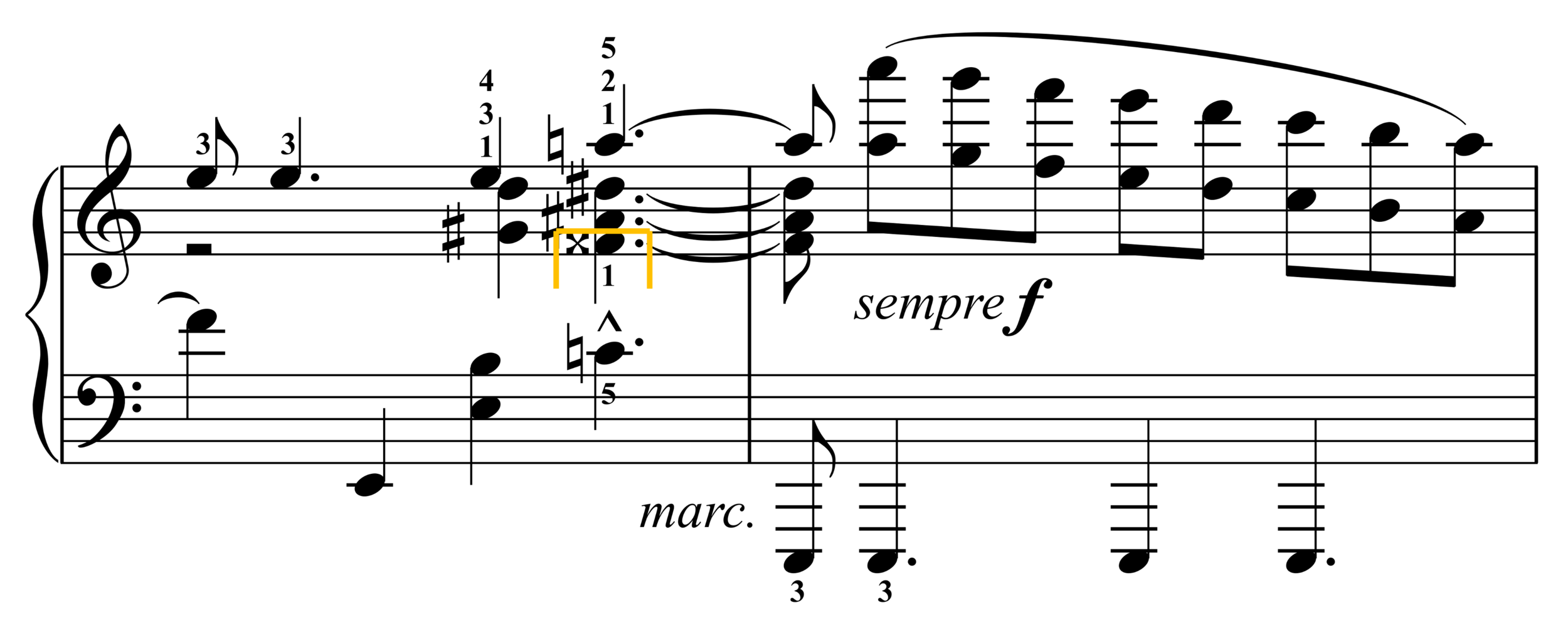“Switching the C to the left hand allows for a more evenly divided roll and requires the right hand to move less from its previous position.”
Submitted by Michael Clark
Published on 3/18/2020

“Switching the C to the left hand allows for a more evenly divided roll and requires the right hand to move less from its previous position.”
Submitted by Michael Clark
Published on 3/18/2020

“These redistributions eliminate stretches beyond an octave which are risky at such a fast tempo.”
Submitted by Michael Clark with thanks to Nancy Weems
Published on 1/1/2020

“Reorganizing the notes as indicated allows pianists who cannot reach the tenth to play the whole chord simultaneously.”
Submitted by Michael Clark
Published on 1/1/2020

“Taking the F-double-sharp in the left hand allows the right hand to maintain a more compact hand shape and thus provides a more powerful delivery.”
Submitted by Michael Clark
Published on 1/1/2020

Submitted by Perry Zou
Published on 5/21/2025
“Redistributing the large chords in the RH to the left to increase accuracy and minimize unnecessary drag in tempo. Can be applied similarly in m. 120-125.”

“Switching the E to the right hand eliminates a stretched position in the left hand. More compact positions allow a more forceful delivery.”
Submitted by Michael Clark
Published on 1/1/2020

“Taking the C-sharps in the right hand eliminates a stretch in the left hand. More compact positions allow a more forceful delivery.”
Submitted by Michael Clark
Published on 1/1/2020

“Taking the C-sharp in the left hand reduces the stretch from a tenth to an augmented octave.”
Submitted by Michael Clark
Published on 1/1/2020

“I like a more balanced feeling between the hands where possible.”
Submitted by Michael Clark
Published on 1/1/2020

“The right hand doesn’t need to stretch to reach this chord or roll it when the bottom note is within easy reach of the left hand.”
Submitted by Michael Clark
Published on 3/17/20

“The right hand doesn’t need to stretch to reach this chord or roll it when the bottom note is within easy reach of the left hand.”
Submitted by Michael Clark
Published on 3/17/20

Submitted by Melinda Smashey Jones
Published on 12/29/2020

Submitted by Melinda Smashey Jones
Published on 12/29/2020

“I play the left-hand F-sharp before the beat. The four treble notes sound better struck as a solid chord than rolled, and I am less bothered by the bass F-sharp being early.”
Submitted by Melinda Smashey Jones
Published on 12/29/2020

Submitted by Melinda Smashey Jones
Published on 12/29/2020

Submitted by Melinda Smashey Jones
Published on 12/29/2020

Submitted by Melinda Smashey Jones
Published on 12/29/2020


Submitted by Melinda Smashey Jones
Published on 12/29/2020